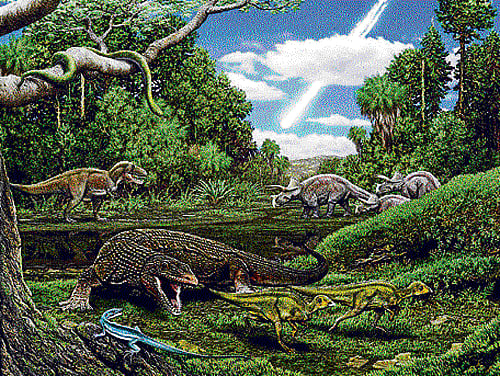
The field of science has always been interesting and attractive, be it constant new inventions to lead a comfortable life or new discoveries of various species of the diverse life on earth. An intriguing aspect of any invention or discovery is the naming. The proper naming of inventions and discoveries is very much necessary — as important as a person’s identity.
Generally, inventions and discoveries are named after the scientists who are responsible for it, like Newton’s laws of motion and Ohm’s law etc in physics or usage of Latin names, like the naming of elements in chemistry based on their properties. In a similar fashion, biology has been following its own unique way of naming species. Nomenclature of species is generally done by the species’ external appearance; its origin or name is generally a dedication to a certain person. Some species are even named after mythical characters from poems and novels and some in honour of great personalities.
For example, Victoria — a flowering water plant was named in honour of Queen Victoria of Great Britain; Avahi cleesei – a species of lemur – was recently named after the actor John Cleese in recognition of his work to promote the plight of lemurs in Madagascar. There is also a species of beetle – Anophthalmus hitleri – named after Adolf Hitler in 1933.
Here is yet another newly found species, a lizard that lived millions of years ago, named by a group of Yale scientists as Obamadon gracilis after none other than the president of the United States, Barack Obama. The scientists combined the Latin name Obamadon which means “Obama’s teeth” and gracilis which means “slender” to coin the name.
Obamadon gracilis was one of the nine newly discovered species in the Proceedings of the National Academy of Sciences. One of the scientists of the group of researchers, Nicholas R Longrich of the Yale University, quotes that, “The lizard has these very tall, straight teeth and Obama has these tall, straight incisors and a great smile.”
This extinct lizard belonged to the genus of polyglyphanodontia from the Late Cretaceous of North America. It was identified as a member of this genus in 2012 on the basis of a V-shaped connection between the two halves of the lower jaw, a slot-and-ridge type connection between the dentary bone of the lower jaw and another missing bone called the “splenial bone”. Its jaw is thin and straight, unlike the curved jaws of most other polyglyphanodontians. The teeth of Obamadon are implanted within the jaw bone.
In 1974, this small, insect-eating lizard was first discovered in Montana and had been wrongly classified as a Leptochamons denticulatous. But a recent re-examination showed that the fossil was a new species.
According to the scientists, like many other dinosaurs, the lizard died 65 million years ago when a giant asteroid struck our earth.
The lizard was identified as a part of the search of museum collections to find snake and lizard species that had lived immediately prior to the Cretaceous-Paleogene extinction event — in which the dinosaurs died out. Due to this mass extinction, scientists have found that 83 per cent of the lizards and snakes, including Obamadon, have died out. The present-day species of lizards have descended from members of the surviving 17 per cent.
